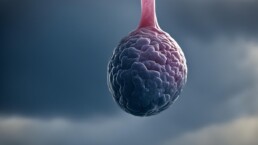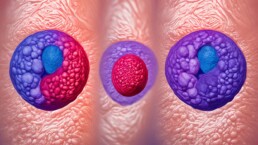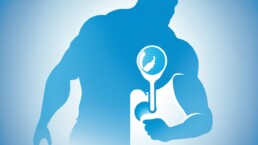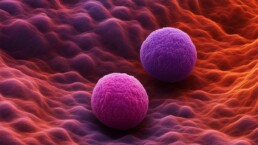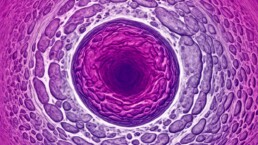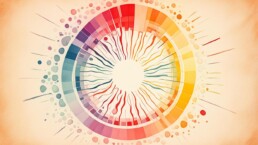Medically reviewed by Dr Chandril Chugh,
Renowned Neurologist and American Trained Specialist
Testicular cancer is a serious condition that requires prompt medical attention. Recognizing the early signs and symptoms can lead to early detection and better treatment outcomes. It is important to be aware of the changes and abnormalities that may occur in the testicles or surrounding areas. By understanding the early signs of testicular cancer, you can take proactive steps to protect your health.
Table of Contents
ToggleSome common early signs of testicular cancer include:
- An enlarged testicle
- A small lump or area of hardness in the testicle
- Pain, tenderness, or swelling of the testicle
These signs may indicate the presence of testicular cancer, but it’s important to note that they can also be caused by noncancerous conditions. That’s why it is crucial to consult a doctor if you notice any changes or abnormalities in your testicles or experience any of these symptoms.
As testicular cancer progresses, additional symptoms may occur, such as:
- Dull ache in the lower abdomen or groin
- Fluid buildup in the scrotum
- Breast tenderness or growth
- Lower back pain
- Shortness of breath
- Chest pain
- Swelling of the legs
It’s important to remember that these symptoms can also be caused by noncancerous conditions. Only a medical evaluation can provide a proper diagnosis.
Key Takeaways:
- Early detection of testicular cancer can lead to better treatment outcomes.
- Common early signs of testicular cancer include an enlarged testicle, a small lump or area of hardness, and pain or swelling.
- Other symptoms may occur as the cancer progresses, such as lower abdomen or groin pain, fluid buildup in the scrotum, breast tenderness or growth, lower back pain, shortness of breath, chest pain, and leg swelling.
- These symptoms can also be caused by noncancerous conditions, so a medical evaluation is necessary for a proper diagnosis.
- Consult a doctor if you notice any changes or abnormalities in your testicles or experience any of the mentioned symptoms.
Common Symptoms of Testicular Cancer
When it comes to testicular cancer, recognizing the common symptoms can make all the difference. By being aware of these signs, you can seek prompt medical attention, increasing your chances of early detection and effective treatment.
Common symptoms of testicular cancer include:
- A painless lump or swelling on either testicle
- Pain, discomfort, or numbness in a testicle or the scrotum, with or without swelling
- Changes in the way a testicle feels or a feeling of heaviness in the scrotum
- A dull ache in the lower abdomen or groin
- A sudden buildup of fluid in the scrotum
- Breast tenderness or growth
- Lower back pain
- Shortness of breath
- Chest pain
- Swelling of the legs
It’s important to note that not all men with testicular cancer will experience these symptoms, and some may not have any symptoms at all until the cancer has spread. However, if you notice any of these signs, it’s essential to consult a healthcare professional for further evaluation.
| Symptom | Description |
|---|---|
| Painless lump or swelling | A noticeable growth or enlargement on either testicle |
| Pain, discomfort, or numbness | Unusual sensations in a testicle or the scrotum, with or without swelling |
| Changes in testicle | Alterations in the texture, size, or shape of a testicle |
| Feeling of heaviness | A sense of weight or pressure in the scrotum |
| Dull ache in lower abdomen or groin | Persistent discomfort in the lower abdominal area or groin |
| Fluid buildup in scrotum | A sudden accumulation of fluid, causing swelling in the scrotum |
| Breast tenderness or growth | Tenderness or enlargement of breast tissue, potentially due to hormonal changes triggered by cancer cells |
| Lower back pain | Pain or discomfort in the lower back region |
| Shortness of breath | Difficulty breathing or catching breath without exertion |
| Chest pain | Pain or discomfort in the chest area |
| Swelling of the legs | Unexplained swelling in the legs |
Keep in mind that these symptoms can also be caused by noncancerous conditions, so it’s crucial to consult a healthcare professional for an accurate diagnosis. The earlier testicular cancer is detected, the greater the chances of successful treatment and recovery.
Less Common Symptoms of Testicular Cancer
In addition to the common symptoms mentioned earlier, testicular cancer can also present with less common symptoms. While these symptoms are less frequently reported, they should still be taken seriously and evaluated by a healthcare professional.
Less Common Symptoms:
- Unevenness in the testicle
- Enlargement or tenderness of the breast tissue (due to hormones created by cancer cells)
- Back pain
Experiencing a feeling of unevenness in the testicle can be an indicator of testicular cancer. If you notice any changes in the size, shape, or texture of your testicles, it’s important to consult a healthcare professional for further assessment.
Enlargement or tenderness of the breast tissue can also be a less common sign of testicular cancer. This occurs due to hormones produced by cancer cells. If you observe any changes in your breast tissue, such as swelling, tenderness, or lumps, it’s crucial to seek medical advice.
Back pain can sometimes be associated with testicular cancer, particularly if the cancer has spread beyond the testicles. If you experience persistent or unexplained back pain, it’s essential to inform your doctor and explore the possibility of underlying causes, including testicular cancer.
Remember, the presence of less common symptoms does not automatically mean you have testicular cancer. However, it’s important to be aware of these signs and consult a healthcare professional for evaluation, especially if you have any concerns or notice any unusual changes in your body. Prompt medical attention can lead to a timely diagnosis and appropriate treatment.
“Recognizing the less common symptoms of testicular cancer is crucial for early detection and timely treatment.”
Testicular Cancer Symptoms Comparison
Noncancerous Conditions That Can Cause Similar Symptoms
It is important to be aware that several noncancerous conditions can exhibit symptoms similar to testicular cancer. These conditions may cause changes in the size or presence of a lump in the testicle. Some of the noncancerous conditions mistaken for testicular cancer include:
- Cysts called spermatocele that develop in the epididymis
- An enlargement of the blood vessels from the testicle called a varicocele
- A buildup of fluid in the membrane around the testicle called a hydrocele
- An opening in the abdominal muscle called a hernia
- Infections, injury, and twisting of the testicle
If you experience any symptoms or changes, it is essential to consult a medical professional for an accurate diagnosis. They will be able to differentiate between noncancerous conditions and testicular cancer through various diagnostic tests and examinations.
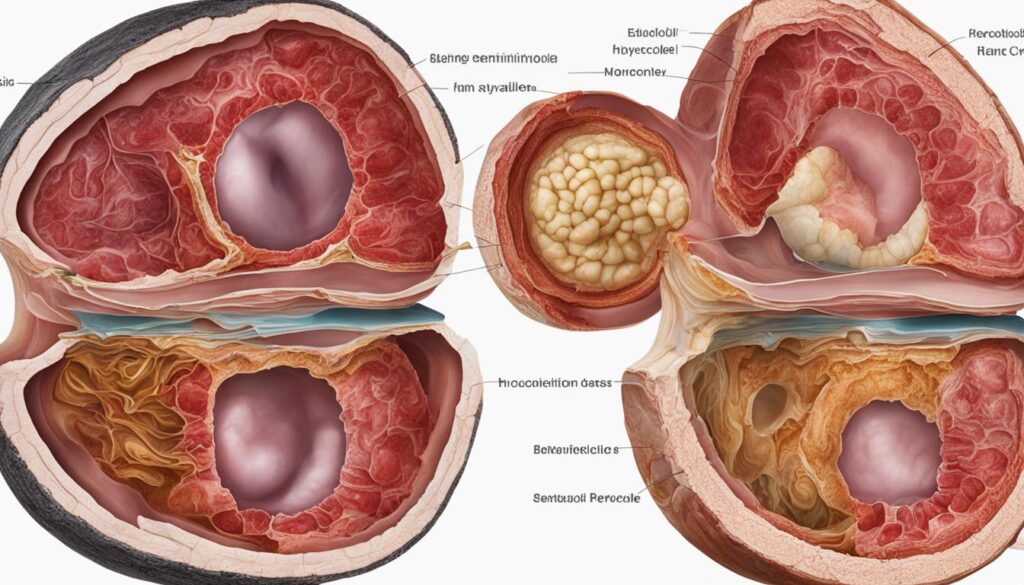
A visual representation of noncancerous conditions that can cause similar symptoms to testicular cancer.
Risk Factors for Testicular Cancer
A number of risk factors are associated with a higher chance of developing testicular cancer. It’s important to be aware of these factors as they can increase your risk. However, it’s essential to note that having a risk factor does not guarantee the development of testicular cancer. If you have any concerns or fall into any of the following categories, it’s advisable to discuss them with a healthcare professional.
1. Undescended Testicle (Cryptorchidism)
If one or both of your testicles did not descend into the scrotum before birth, your risk of testicular cancer is increased. Undescended testicles are more prone to developing cancer, especially if they remain unresected.
2. Family History of Testicular Cancer
If you have a close family member, such as a father or brother, who has had testicular cancer, your risk is higher compared to someone with no family history. Interestingly, the risk is slightly greater if the affected family member was your sibling.
3. Personal History of Testicular Cancer
If you have had testicular cancer before, the likelihood of developing it again in the remaining testicle or the other testicle is increased.
4. Infertility
There appears to be a link between infertility and an increased risk of testicular cancer. Researchers suggest that both conditions might share underlying causes, such as abnormal testicular development or hormone imbalances.
5. HIV and AIDS
Individuals with HIV or AIDS have a higher risk of several types of cancer, including testicular cancer. The weakened immune system in these cases allows cancer cells to proliferate more easily.
6. Certain Intersex Variations
Specific intersex variations, such as Klinefelter syndrome (a condition where males are born with an extra X chromosome), are associated with an increased risk of testicular cancer.
7. Regular Cannabis Use
Some studies suggest a possible link between regular cannabis use, particularly during adolescence, and an increased risk of testicular cancer. However, further research is needed to establish a definitive causative relationship.

Facts and Figures:
To further emphasize the importance of understanding risk factors for testicular cancer, let’s take a look at some relevant data:
| Risk Factor | Increased Risk |
|---|---|
| Undescended Testicle (Cryptorchidism) | 3-10 times |
| Family History of Testicular Cancer | 4-12 times |
| Personal History of Testicular Cancer | 15-33 times |
| Infertility | 2.5 times |
Note: The increased risk values mentioned above are approximate and can vary based on individual factors.
While having one or more of these risk factors may increase your chances of developing testicular cancer, it’s important to remember that many cases occur in individuals without any identifiable risk factors. Regular self-examinations and prompt medical attention for any unusual changes or symptoms are crucial for early detection and successful treatment of testicular cancer.
Diagnosis of Testicular Cancer
If any symptoms or abnormalities are noticed, it is important to visit a doctor for a diagnosis. The diagnosis of testicular cancer typically involves a physical examination of the testicles to check for lumps or swelling. Additional tests may include ultrasound imaging to confirm the presence of a mass and blood tests to detect tumor markers. In some cases, surgical removal of the affected testicle (orchidectomy) may be necessary for a definitive diagnosis.
When you visit a doctor with concerns regarding testicular cancer, they will conduct a thorough examination to assess your condition. This includes physically examining your testicles to check for any lumps or changes in size, shape, or texture. The examination is typically painless and only takes a few minutes. However, the doctor may also perform additional tests to obtain a more accurate diagnosis.
One common diagnostic tool used in the evaluation of testicular cancer is ultrasound imaging. This non-invasive procedure uses high-frequency sound waves to produce detailed images of the testicles and can help identify any abnormalities, such as the presence of a mass or tumor.
Blood tests are another valuable tool in diagnosing testicular cancer. These tests can measure specific substances, known as tumor markers, that are produced by certain types of cancer cells. High levels of tumor markers in the blood may indicate the presence of testicular cancer.
In some cases, a surgical procedure called orchidectomy may be necessary for a definitive diagnosis. During this procedure, the affected testicle is removed and examined under a microscope to confirm the presence of cancer cells.
Remember, it is essential to consult a healthcare professional if you notice any symptoms or abnormalities in your testicles. Early diagnosis plays a crucial role in the successful treatment of testicular cancer.
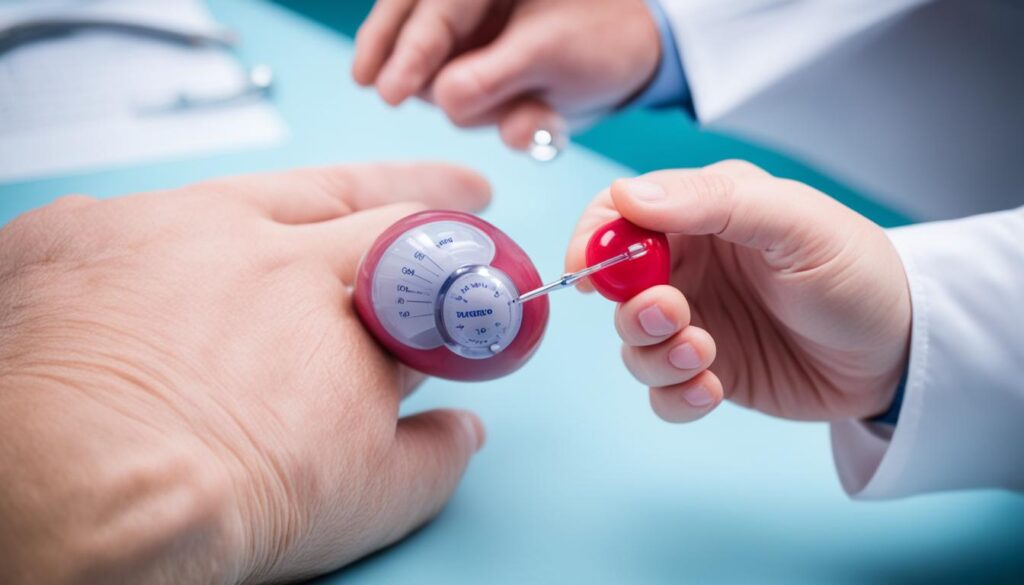
| Diagnostic Methods for Testicular Cancer | |
|---|---|
| Diagnostic Method | Description |
| Physical Examination | A doctor visually and manually evaluates the testicles to check for lumps, swelling, or other abnormalities. |
| Ultrasound Imaging | High-frequency sound waves are used to create detailed images of the testicles, aiding in the identification of masses or tumors. |
| Blood Tests | Measure the levels of tumor markers in the blood to assess the likelihood of testicular cancer. |
| Orchidectomy | Surgical removal of the affected testicle for further examination under a microscope to confirm the presence of cancer cells. |
Treatment Options for Testicular Cancer
When it comes to treating testicular cancer, the available options depend on the specific type and stage of the cancer. The treatment plan is personalized to each individual and may include one or a combination of the following:
- Surgery: Surgical removal of the affected testicle, known as radical inguinal orchiectomy, is often the first step in treating testicular cancer. This procedure helps determine the type and stage of the cancer, as well as removes the primary tumor.
- Chemotherapy: This treatment option uses powerful drugs to kill cancer cells or prevent their growth. Chemotherapy may be administered before or after surgery, depending on the stage and characteristics of the cancer. It may be given as a pill, injection, or infusion, and can be used as the primary treatment or to target any remaining cancer cells.
- Radiation Therapy: Radiation therapy uses high-energy beams to target and kill cancer cells. It may be recommended after surgery or as the primary treatment for certain types of testicular cancer. This localized treatment is usually given over several weeks.
Table: Comparative Summary of Testicular Cancer Treatment Options
| Treatment Option | Description | Pros | Cons |
|---|---|---|---|
| Surgery | Removal of the affected testicle | – Provides definitive diagnosis – Removes primary tumor – May be curative for early-stage cancers | – Potential impact on fertility and body image – Risk of surgical complications |
| Chemotherapy | Administration of powerful drugs | – Systemic treatment – Can target cancer cells throughout the body – Can be used before or after surgery | – Side effects such as nausea, hair loss, and fatigue – Risk of long-term effects on fertility and other organs |
| Radiation Therapy | Use of high-energy beams to target cancer cells | – Precise treatment of localized disease – Non-invasive – May spare healthy tissue | – Potential side effects including skin changes and fatigue – Risk of long-term effects on fertility and other organs |
It is important to discuss all treatment options with a healthcare professional to understand the potential benefits and drawbacks of each. The healthcare team will consider factors such as the stage of the cancer, the presence of metastasis, and the individual’s overall health when formulating the most appropriate treatment plan. Open communication and shared decision-making with the healthcare team are key to ensuring the best possible outcome for testicular cancer treatment.
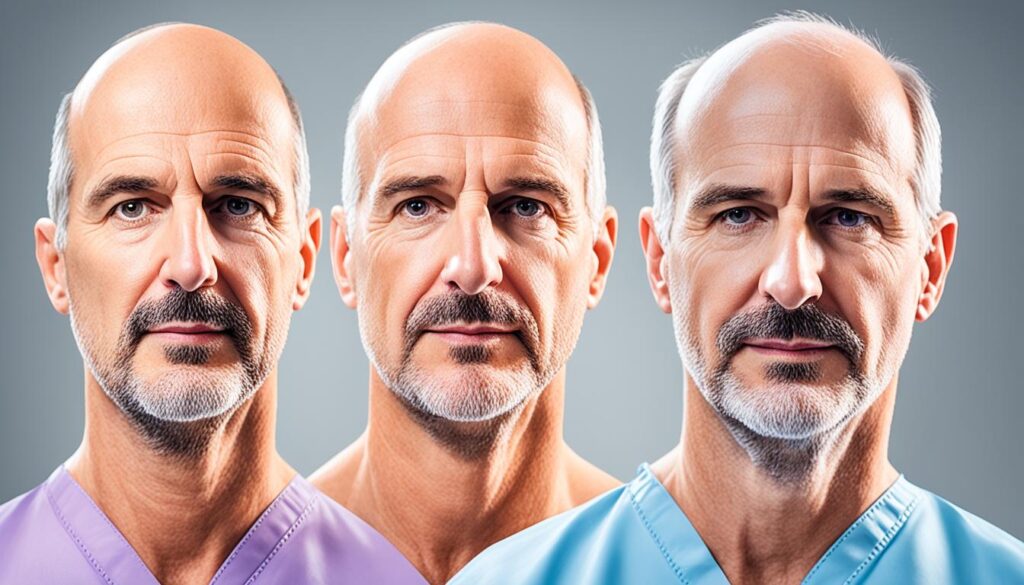
Palliative Care for Testicular Cancer
Palliative care plays a crucial role in managing symptoms and improving the quality of life for individuals with testicular cancer. When diagnosed with testicular cancer, you may experience various symptoms and side effects from treatment that can impact your daily life. Proper palliative care can help address these issues, providing relief, comfort, and emotional support during your treatment journey.
In palliative care, the focus is on relieving pain and managing the symptoms associated with testicular cancer. Healthcare professionals work closely with you to develop a personalized care plan that meets your specific needs. The goal of palliative care is to enhance your overall well-being and maintain a good quality of life.
During palliative care, healthcare providers may employ a range of strategies to manage symptoms such as pain, nausea, fatigue, or emotional distress. This may include medication management, physical therapy, counseling, and complementary therapies. Palliative care also extends beyond medical treatment to address other aspects of your well-being, including psychological, social, and spiritual support.
It is essential to maintain open communication with your healthcare team regarding any new symptoms or changes in symptoms you may experience. By actively communicating your needs, you ensure that your medical providers are aware of your current condition and can provide appropriate management and support.

Palliative care aims to empower you to actively participate in your treatment, allowing you to make informed decisions and maintain a sense of control throughout your testicular cancer journey. By managing symptoms and improving your overall well-being, palliative care plays a vital role in supporting you and your loved ones during this challenging time.
Prognosis and Outlook for Testicular Cancer
The prognosis for testicular cancer depends on several factors, including the type and stage of the cancer, age at diagnosis, and overall health. When testicular cancer is detected early and treated appropriately, the prognosis is generally favorable. In fact, testicular cancer has one of the highest cure rates among all types of cancer.
According to the American Cancer Society, the 5-year relative survival rate for all stages combined is about 95%. This means that, on average, 95 out of 100 men diagnosed with testicular cancer are expected to survive for at least 5 years after their diagnosis.
However, it is important to note that individual outcomes can vary. Factors such as the specific type of testicular cancer, the stage and extent of the disease, and the individual’s response to treatment can all impact the long-term prognosis.
Regular follow-up care and ongoing monitoring are essential for individuals who have been treated for testicular cancer. This helps to detect any signs of recurrence or potential late effects of treatment. Your healthcare team will work closely with you to develop a personalized follow-up plan.
Remember, the prognosis for testicular cancer has significantly improved over the years, thanks to advancements in diagnosis and treatment. With prompt medical attention and appropriate management, many men go on to lead healthy and fulfilling lives after testicular cancer.

| Cancer Stage | 5-Year Relative Survival Rate |
|---|---|
| Localized (cancer has not spread beyond the testicles) | 99% |
| Regional (cancer has spread to nearby lymph nodes) | 96% |
| Distant (cancer has spread to distant organs or lymph nodes) | 73% |
| All stages combined | 95% |
Conclusion
Testicular cancer is a relatively rare but treatable form of cancer that primarily affects young men. Early detection plays a crucial role in improving treatment outcomes and survival rates. By being aware of the early signs and symptoms of testicular cancer, you can take prompt action and seek medical attention if any abnormalities or changes are noticed in the testicles or surrounding areas.
Regular self-checks of the testicles and open communication with healthcare professionals are essential in maintaining your overall health and well-being. Testicular cancer can often be successfully treated with proper diagnosis, appropriate treatment, and ongoing support from a healthcare team. It is important to consult a doctor if you experience any symptoms or are concerned about any changes you notice.
Remember, early detection can lead to timely treatment and significantly improve your prognosis. By staying informed and proactive about your health, you can empower yourself in the fight against testicular cancer. Don’t hesitate to reach out to healthcare professionals for guidance and support throughout your journey.
FAQ
What are the early signs of testicular cancer?
The early signs of testicular cancer may include an enlarged testicle, a small lump or area of hardness, pain, tenderness, or swelling.
What are the common symptoms of testicular cancer?
Common symptoms of testicular cancer include the presence of a painless lump or swelling on either testicle, pain or discomfort in a testicle or the scrotum, changes in the way a testicle feels, a feeling of heaviness in the scrotum, a dull ache in the lower abdomen or groin, and sudden buildup of fluid in the scrotum.
What are the less common symptoms of testicular cancer?
Less common symptoms of testicular cancer may include a feeling of unevenness in the testicle, enlargement or tenderness of the breast tissue, and back pain.
What are the noncancerous conditions that can cause similar symptoms to testicular cancer?
Noncancerous conditions that can cause similar symptoms to testicular cancer include changes in size or a lump in a testicle, cysts called spermatocele, an enlargement of the blood vessels from the testicle called varicocele, a buildup of fluid in the membrane around the testicle called hydrocele, and an opening in the abdominal muscle called a hernia.
What are the risk factors for testicular cancer?
Risk factors for testicular cancer include having an undescended testicle, a family history of testicular cancer, a personal history of testicular cancer, infertility, HIV and AIDS, certain intersex variations, and regular cannabis use.
How is testicular cancer diagnosed?
The diagnosis of testicular cancer typically involves a physical examination of the testicles to check for lumps or swelling. Additional tests may include ultrasound imaging and blood tests to detect tumor markers. In some cases, surgical removal of the affected testicle may be necessary for a definitive diagnosis.
What are the treatment options for testicular cancer?
Treatment options for testicular cancer may include surgery, chemotherapy, radiation therapy, or a combination of these treatments. The specific treatment plan will be determined by a healthcare professional based on individual factors such as the stage of the cancer and overall health.
What is palliative care for testicular cancer?
Palliative care for testicular cancer focuses on relieving pain, managing side effects of treatment, and providing support throughout the treatment journey.
What is the prognosis for testicular cancer?
The prognosis for testicular cancer depends on various factors such as the type and stage of the cancer, age at diagnosis, and overall health. With early detection and appropriate treatment, testicular cancer is highly curable.
How should I recognize testicular cancer symptoms?
It is important to consult a healthcare professional if any changes or abnormalities are noticed in the testicles or surrounding areas. Regular self-checks and open communication with doctors can lead to early detection, timely treatment, and improved prognosis for testicular cancer.
Source Links

This article is medically reviewed by Dr. Chandril Chugh, Board-Certified Neurologist, providing expert insights and reliable health information.
Dr. Chandril Chugh is a U.S.-trained neurologist with over a decade of experience. Known for his compassionate care, he specializes in treating neurological conditions such as migraines, epilepsy, and Parkinson’s disease. Dr. Chugh is highly regarded for his patient-centered approach and dedication to providing personalized care.

